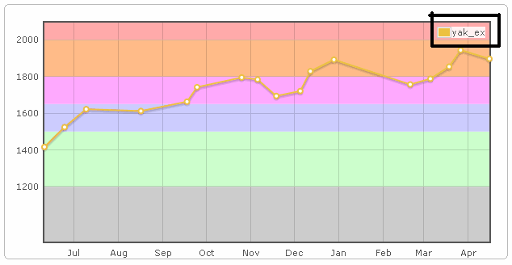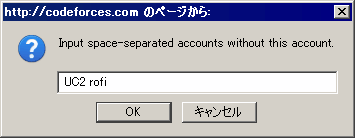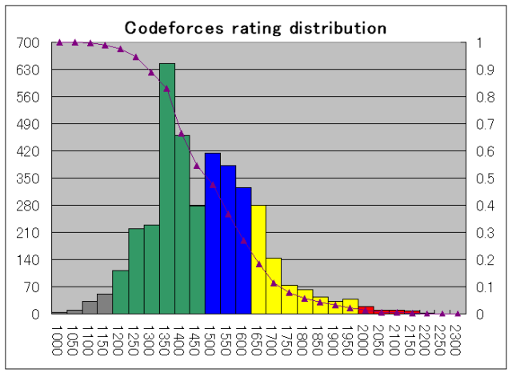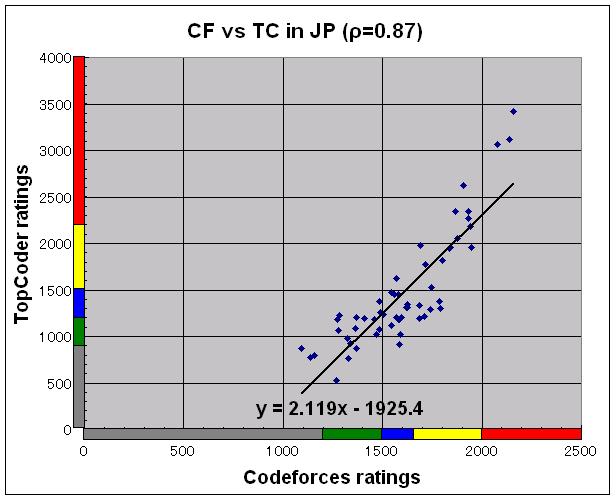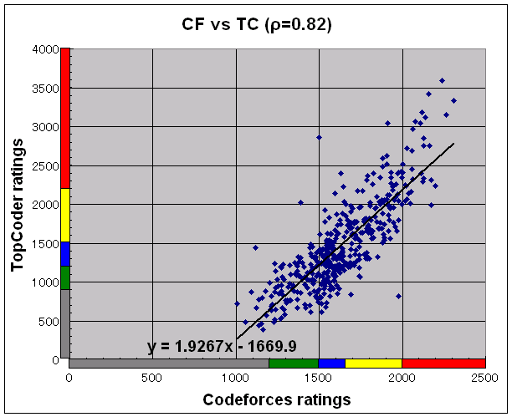This is my second user.js script for Codeforces. If you install this script (Updated: 1.6: 2015/05/05), you can see standings like as follows:
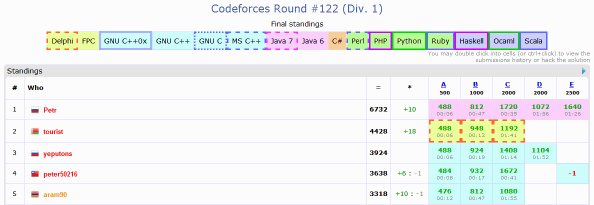
You need to wait for seconds until standings are colorized. The order and decoration are set by my arbitrary feeling. If you want to change them, please edit the script directly. It is quite easy. The latest code is also at github.
On my environment, the user.js script works with the following browser:
- Firefox 3.6.17 with Greasemonkey 0.9.2
- Opera 11.10
- Chrome 12.0 (This is a development version but I think stable versions also work as well.)
Updated (0.02):
Now this script is applicable for division-specific standings and room standings. For room standings, I would be glad if you make some comments...
New feature is added. If you click a colored cell, tiny red triangles appear at the top-left corners of the cells colored in the same way. The following example is the case for clicking "Java". Clicking a marked cell, the marks disappears. It is not necessary to click cells in the top table. Cells in the actual standings table are also clickable. To clear mark, it is not necessary to click the same cell when marking. To click a marked cell is enough.
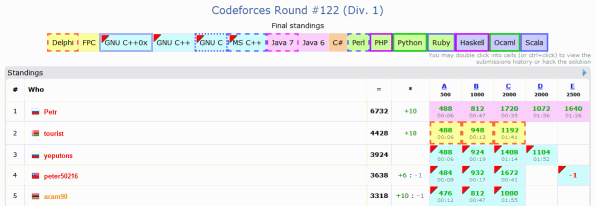
Updated (1.1):
Added OCaml and Scala support. This is just an updated thing. The reason why version jumps up is because Chrome recognizes version 0.0x as 1.0 and rejects update prior to 1.1.
Updated (1.2: 2012/06/05):
Record marked languages into cookie. So, they are persistent, at least, between reloads. The configuration is shared by all standings in a domain (e.g. www.codeforces.com). Thanks to suggestion by iTwin.
Updated (1.3: 2012/06/05):
I didn't notice the comments that Java 6, Java 7 and Perl are not highlighted. Now, they are highlighted.
Updated (1.4: 2013/05/07):
Add new languages (Python -> Python 2 and Python 3, C# -> Mono C# and MS C#, D, and Go).
Updated (1.5: 2014/06/01):
Add new languages (Java 8 and JavaScript).
Updated (1.6: 2015/05/05):
Add new languages (GNU C++11 (unified with GNU C++0x), GNU C11 and PyPy (unified with 2 and 3)).









